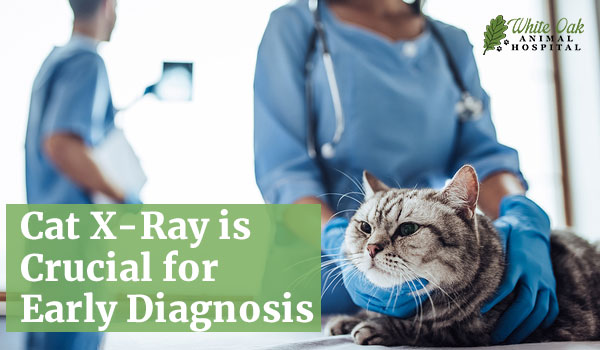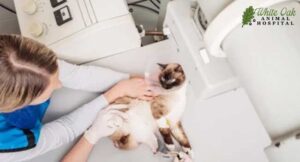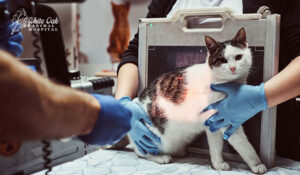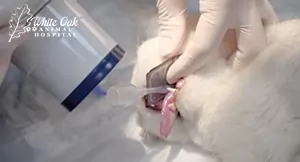
A cat X-ray is a diagnostic tool that provides a detailed view of your cat’s internal structures, including bones, organs, and tissues. It is one of the most frequently used imaging techniques in veterinary medicine, thanks to its ability to detect a wide range of health issues. Whether your cat has suffered a traumatic injury or is showing subtle signs of illness, an X-ray can reveal hidden problems that might not be apparent during a physical examination.
Early diagnosis is critical in maintaining your cat’s health and ensuring prompt treatment. Many conditions, if detected early through a cat X-ray, can be managed more effectively, leading to better outcomes. For pet owners, understanding the vital role of X-rays can help you make informed decisions about your cat’s healthcare. In this article, we will explore five compelling reasons why a cat X-ray is essential for early diagnosis, providing insight into how this technology can safeguard your feline friend’s well-being.
Cat X-Ray: Detecting Hidden Fractures and Injuries Early
Cats are naturally stoic animals, often masking pain and discomfort until a condition has progressed significantly. This tendency makes it difficult for pet owners to recognize when their feline friend is injured. A cat X-ray is a powerful tool that can uncover fractures, dislocations, and other injuries that may not be visible during a routine examination.
 Imagine your cat has a minor fall. On the surface, everything seems fine—no limping, no visible wounds. However, cats have a remarkable ability to hide pain, and what appears to be a minor incident could result in a serious fracture. A cat X-ray can reveal such injuries, allowing for timely intervention that can prevent further complications. In cases of suspected trauma, an X-ray provides a clear image of the skeletal structure, helping veterinarians identify even the smallest fractures or dislocations that could lead to chronic pain or mobility issues if left untreated.
Imagine your cat has a minor fall. On the surface, everything seems fine—no limping, no visible wounds. However, cats have a remarkable ability to hide pain, and what appears to be a minor incident could result in a serious fracture. A cat X-ray can reveal such injuries, allowing for timely intervention that can prevent further complications. In cases of suspected trauma, an X-ray provides a clear image of the skeletal structure, helping veterinarians identify even the smallest fractures or dislocations that could lead to chronic pain or mobility issues if left untreated.
Cat X-Ray: Identifying Respiratory Issues Before They Escalate
Respiratory problems in cats can develop quickly and, if not diagnosed early, may become life-threatening. Common respiratory issues include asthma, pneumonia, and the presence of foreign objects in the airways. A cat X-ray offers a non-invasive method to visualize the lungs and airways, helping veterinarians detect these issues at an early stage.
For instance, a cat with subtle symptoms like occasional coughing or shortness of breath might be suffering from early-stage asthma. Without a cat X-ray, such conditions can be easily overlooked until they escalate. The X-ray allows the veterinarian to examine the size, shape, and clarity of the lungs and airways, making it easier to diagnose and treat respiratory conditions before they become severe. Early detection through X-rays not only improves treatment outcomes but can also be life-saving in acute cases.
Cat X-Ray: Diagnosing Digestive Tract Blockages and Abnormalities
 Digestive issues in cats are common and can range from mild discomfort to life-threatening blockages. A cat X-ray is instrumental in diagnosing problems within the digestive tract, such as swallowed foreign objects, tumors, or severe constipation.
Digestive issues in cats are common and can range from mild discomfort to life-threatening blockages. A cat X-ray is instrumental in diagnosing problems within the digestive tract, such as swallowed foreign objects, tumors, or severe constipation.
Cats are known for their curiosity, and it’s not uncommon for them to ingest something they shouldn’t, leading to a blockage. Symptoms like vomiting, lethargy, or refusal to eat may indicate a serious issue, but without a cat X-ray, pinpointing the problem can be challenging. The X-ray provides a detailed image of the digestive tract, allowing veterinarians to identify the exact location and nature of the blockage or abnormality. Early diagnosis with a cat X-ray ensures that the appropriate treatment can be administered before the condition becomes critical, potentially saving your cat’s life.
Cat X-Ray: Monitoring Dental Health and Oral Conditions
 Dental health is often overlooked in cats, yet it plays a crucial role in their overall well-being. A cat X-ray is essential for diagnosing dental problems that are not visible during a standard oral examination, such as tooth decay, gum disease, and oral tumors.
Dental health is often overlooked in cats, yet it plays a crucial role in their overall well-being. A cat X-ray is essential for diagnosing dental problems that are not visible during a standard oral examination, such as tooth decay, gum disease, and oral tumors.
Cats are prone to dental issues that can lead to pain, difficulty eating, and even systemic infections. A cat X-ray allows veterinarians to see beneath the gums, where many serious dental problems begin. For example, tooth resorption, a common condition in cats, can be detected early with an X-ray, allowing for timely treatment that can prevent pain and tooth loss.
Cat X-Ray: Evaluating Internal Organs for Early Disease Detection
A cat X-ray is not limited to bones and teeth; it also provides valuable insights into the health of internal organs. This imaging tool is crucial for assessing organs such as the heart, liver, and kidneys, enabling early detection of diseases that could otherwise go unnoticed.
For instance, a cat X-ray can reveal an enlarged heart, which might indicate heart disease. Similarly, changes in the size or shape of the liver or kidneys can suggest the early stages of organ failure. By identifying these issues early, veterinarians can initiate treatment before the disease progresses, improving the chances of a positive outcome. Routine X-rays, as part of a comprehensive health check, can be a proactive approach to managing your cat’s health, catching potential problems before they become serious.
Conclusion: The Lifesaving Potential of Regular Cat X-Rays
 Regular cat X-rays are a vital component of comprehensive feline healthcare. They provide an unparalleled view of your cat’s internal structures, enabling early diagnosis and treatment of various conditions that might otherwise remain hidden. At White Oak Animal Hospital, we specialize in integrative veterinary care, offering advanced diagnostic tools like cat X-rays alongside traditional Chinese veterinary medicine (TCVM) and telemedicine consultations. With over 28 years of experience, our team is dedicated to providing your cat with the best possible care, ensuring they live a long and healthy life.
Regular cat X-rays are a vital component of comprehensive feline healthcare. They provide an unparalleled view of your cat’s internal structures, enabling early diagnosis and treatment of various conditions that might otherwise remain hidden. At White Oak Animal Hospital, we specialize in integrative veterinary care, offering advanced diagnostic tools like cat X-rays alongside traditional Chinese veterinary medicine (TCVM) and telemedicine consultations. With over 28 years of experience, our team is dedicated to providing your cat with the best possible care, ensuring they live a long and healthy life.
Frequently Asked Questions
1. How often should a cat have an X-ray?
The frequency of cat X-rays depends on your pet’s health and any underlying conditions. Routine X-rays may be recommended annually for older cats or those with chronic health issues. Your veterinarian will provide a personalized recommendation based on your cat’s specific needs.
2. Are cat X-rays safe?
Yes, cat X-rays are generally safe. The amount of radiation used is minimal, and the procedure is non-invasive. In some cases, sedation may be required to keep your cat calm during the process, but this is done with your pet’s comfort and safety in mind.
3. Can a cat X-ray detect cancer?
A cat X-ray can help detect certain types of tumors and abnormal growths, which may indicate cancer. However, further diagnostic tests, such as biopsies or ultrasounds, may be needed to confirm a cancer diagnosis.
Related Posts
-
Is Your Senior Cat Losing Weight? Unlock 5 Reasons Why
As conscientious guardians of our feline friends, we recognize the escalating concern among pet owners…
-
5 Alarming Signs of Cat Skin Cancer: Early Detection is Key
The importance of early detection in managing cat skin cancer cannot be overstated. As pet…
-
Cat Acupuncture 101: Essential Things Every Owner Should Know for a Happier, Healthier Pet
A veterinarian with specialized training in this field is pivotal in cat acupuncture. They assess…
-
Easy Cat UTI Prevention
Cat UTI prevention is simple once you understand the root cause. Your veterinarian can help…









